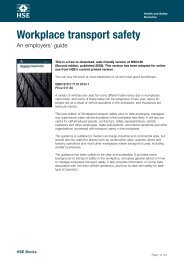Download - Arri
Download - Arri
Download - Arri
You also want an ePaper? Increase the reach of your titles
YUMPU automatically turns print PDFs into web optimized ePapers that Google loves.
photo Dean Morin<br />
it turned out that digital was going to be more<br />
expensive for us than film.<br />
Were you generally shooting single camera<br />
setups, or were you often on two cameras?<br />
NP: For the London shoot we always shot<br />
with two cameras, if not three, although we<br />
never compromised the first camera. That<br />
could be frustrating for the B- and C-cameras<br />
because for about 90% of the time in London<br />
the A-camera was using a 14mm and was<br />
about a foot away from the actors. The other<br />
cameras would have to use extremely long<br />
lenses by Terry’s standards – a 32mm or<br />
40mm – and steal little moments when they<br />
could. On the visual effects portion of the<br />
shoot we mainly used a single camera<br />
because each shot had been budgeted for,<br />
although we often had two stages going at<br />
the same time in order to accommodate the<br />
schedules of the guys who came in [to<br />
replace Heath Ledger].<br />
When Heath died it must have seemed<br />
impossible that you could go on.<br />
NP: First and foremost Heath was a really<br />
close, dear friend and it was a big blow. I<br />
was on DON QUIXOTE and I couldn’t stand<br />
the idea of yet another of Terry’s movies<br />
going down the drain, especially when in<br />
my opinion we had a great movie in the<br />
can up to that point. Within the grief of the<br />
moment, my first thought was that we can’t<br />
let the movie die as well because Heath was<br />
really in love with the whole project and it<br />
would have betrayed his memory to let it<br />
drop that easily.<br />
Where you having to shoot wide open on<br />
the London night shoots?<br />
NP: There were certainly situations where<br />
we had to shoot wide open, but I relied a<br />
lot on the Kodak stock. I knew the Vision2<br />
5218 pretty well, but the [Vision3] 5219<br />
came out just as we started preproduction,<br />
C a m e r a<br />
so I got a few rolls. We tested it and it is<br />
superior – not in terms of [dynamic] range<br />
but in how clean it is – although we wanted<br />
London to look really gritty so I used the<br />
5218 for London and the 5219 for all the<br />
stage work in Vancouver. I never put any<br />
filters in front of the lens; I love the Zeiss<br />
lenses and the way they capture everything,<br />
and the more texture you have, the more<br />
you can do in the DI afterwards.<br />
You also had the Ultra Prime 8R; what did<br />
you use that for?<br />
NP: There are many shots made with the 8R<br />
in the movie. We used it inside the [theatre]<br />
wagon because the wagon was so small;<br />
we also used it for stage work – for live<br />
action elements that we knew were going<br />
to be framed in a very wide shot in our<br />
models. It’s fantastic, the work they’ve done<br />
on that lens; I’m in love with it.<br />
Mark Hope-Jones<br />
3 3
















